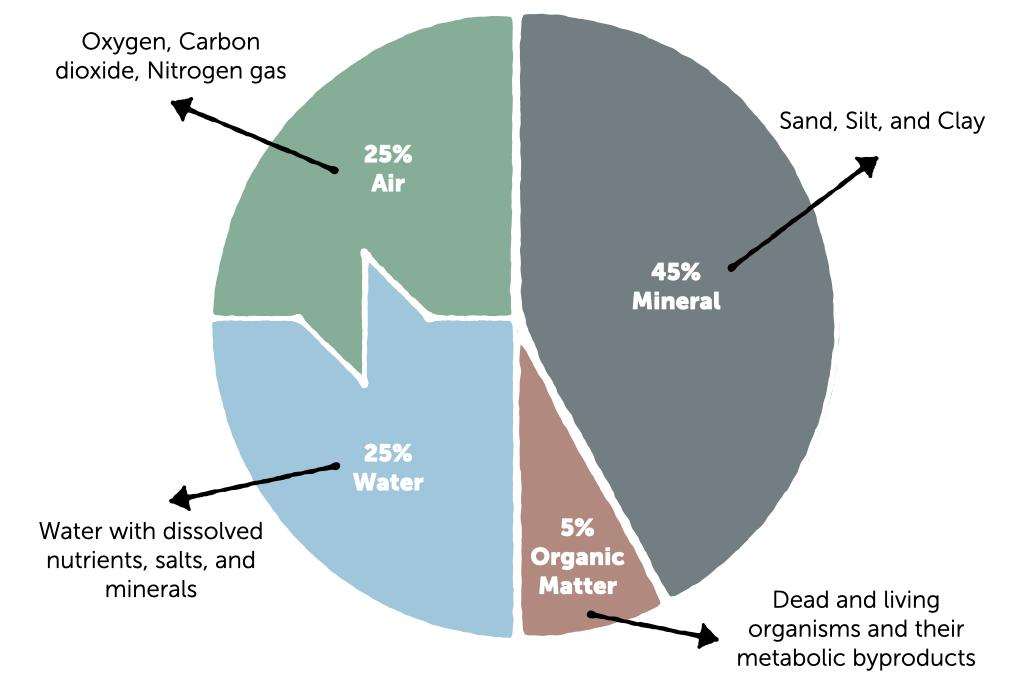
1 minute read
Components of a Soil
Restrictive Layers
Within a soil profile, one can encounter a restrictive layer that impedes movement of water and air or root growth. Restrictive layers formed by vehicle and agricultural machinery are further discussed with regard to compaction (page 34).
Advertisement
In New Mexico restrictive layers are most commonly bedrock, due to the shallow nature of our soils, or caliche. Caliche is a whitish soil layer of cemented carbonates of calcium and magnesium, like chalk. It is commonly formed in arid environments due to high evaporation and/or plant water demand. This high water demand removes water from the soil and leaves behind carbonates that act like cement, partially restricting water, air, and root growth. Caliche also affects soil chemistry, elevating the pH and altering nutrient availability.
In the rest of Section 2.1, we will discuss the components of a soil (think of the boards, nails, and paint that are the building materials of a house) and how they fit together and affect function (think of how metal and wood combined make a door hinge, allowing the door to open and close). We start with the mineral component, organic matter component, and air component because those characteristics together affect the structure of a dry soil. We then address the soil water component because a soil’s structure affects how water moves through it.










